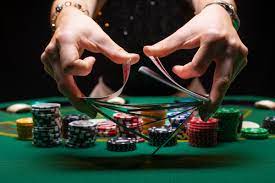Slot machines, often referred to simply as “slots,” are ubiquitous in modern Sinar dewa and have become a cornerstone of the gambling industry. These devices are not only popular among seasoned gamblers but also attract casual players with their simplicity and potential for big wins. In this article, we’ll explore the inner workings of slot machines, their evolution over time, and the psychological factors that contribute to their allure.
Evolution of Slot Machines
The history of slot machines dates back to the late 19th century, with the first mechanical device, the Liberty Bell, invented by Charles Fey in 1895. This early machine set the stage for what would become a global phenomenon. Initially, these machines were purely mechanical, operated by gears, levers, and springs. Over the decades, advancements in technology led to the development of electronic and eventually computerized slot machines.
How Slot Machines Work
Modern slot machines are powered by Random Number Generators (RNGs), which ensure that each spin is independent and random. Despite common misconceptions, there is no memory in a slot machine, meaning previous outcomes have no influence on future spins. The outcome of each spin is purely based on mathematical algorithms and chance.
Types of Slot Machines
Slot machines come in various types and configurations, ranging from classic three-reel machines to more elaborate video slots with multiple paylines, bonus rounds, and progressive jackpots. Each type offers a different gameplay experience and appeals to different types of players.
- Classic Slots: These mimic the original mechanical machines and typically feature three reels and one payline.
- Video Slots: These are more modern and incorporate advanced graphics, animations, and sound effects. They often have multiple paylines (up to 100 or more) and various bonus features.
- Progressive Slots: These machines are interconnected, with a portion of each bet contributing to a pooled jackpot that can reach substantial sums.
Psychology of Slot Machines
Slot machines are designed to be highly engaging and immersive, leveraging psychological principles to keep players hooked:
- Visual and Auditory Stimuli: Bright lights, colorful themes, and catchy sound effects stimulate the senses and create excitement.
- Near Misses: Even when a spin results in a near miss (where symbols almost align for a win), it triggers the brain’s reward system, encouraging continued play.
- Reinforcement Schedules: Slot machines use variable reinforcement schedules, where wins are delivered unpredictably, similar to how animals respond to rewards in behavioral psychology.
Responsible Gambling and Regulation
While slot machines provide entertainment and the potential for winnings, they also carry risks, particularly for vulnerable individuals. Casinos and regulators implement measures to promote responsible gambling, such as self-exclusion programs and limits on bet sizes.
Conclusion
In conclusion, slot machines have evolved significantly since their inception, from mechanical devices to sophisticated electronic systems. Their popularity stems from their simplicity, diverse gameplay options, and the allure of winning large sums. Understanding the mechanics and psychology behind slot machines is crucial for both players and regulators in ensuring a safe and enjoyable gambling environment.
As with any form of gambling, it’s essential to approach slot machines with caution and awareness of the potential risks involved. By understanding how these machines operate and the factors that contribute to their appeal, players can make informed decisions and enjoy their gambling experience responsibly.




